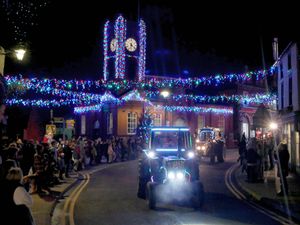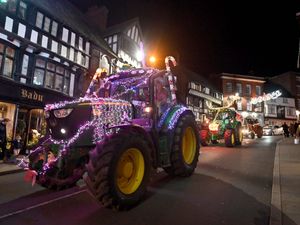Lambing is an all hands-on family affair
Each year the NSA (National Sheep Association) selects around a dozen young people to take part in a series of special training and personal development sessions. These Next Generation Ambassadors, selected from England, Wales, Scotland and Northern Ireland get the opportunity to meet like minded people throughout the UK, as well as key people within the sheep sector.
Glamorgan farmer Jacob Anthony who was chosen to join the 2016 NSA Next Generation Ambassador Group having won the selection panel over with his clear passion for promoting the industry.
The 700-acre South Wales hill farm, Cwm Risca, was purchased by the Anthony family back in the 1920s. It is now farmed as a family partnership of father Peter and mother Emma, who does all the office work and son Jacob, who is the fifth generation to farm there, with grandfather David still keeping an eye on what’s happenings.
The farm is in the middle of the now defunct South Wales coalfield three miles from Bridgend and rises from 450 to 850 feet overlooking Maesteg in the Llynfi Valley. Although it has an annual rainfall of around 80 inches, it benefits from having free draining soils and by being in a mild fairly frost and snow free location.
Jacob’s parents said they would help him if he wanted to farm and since returning from Hartpury College in 2013, he has become responsible for the management of the sheep flock. He is a member of the NFU Cymru’s Next Generation Policy Group and has been on the NSA Academy Course. He said the course was very beneficial to him as was working away on other farms before going on to college to gain some wider experience.
Until recently the farm was carrying 150 suckler cows, mainly Limousine Welsh Black cross cows and 800 breeding ewes, but latterly there have been changes in livestock numbers. The cows have been reduced to 110 to reduce the overall work load and any cows with a bad temperament are cleared out. At the same time as the cow numbers were reduced, the Lleyn cross Texel flock was being increased to 800 ewes, with the intention to increase ewe numbers to 1000. Around half the ewes lamb outside and the intention is to reduce the numbers of ewes lambing inside.
As the fairly light land is free draining the suckler cows are out-wintered mainly on the stubbles of the 100 acres of spring barley grown each year and also strip graze a small area of turnips which are sown at the end of June after the silage has been cut and big square baled using their own equipment. The root crop is followed by spring barley before going back into grass. During the winter months as well as being on the turnips and barley stubbles, the cows graze the grass fields due to be ploughed for the cereal crop when they are given access to silage.
The Welsh Black and Welsh Black cross cows are kept because of their hardiness are mainly crossed with Limousin bulls to get good carcase weights, with a few of the cows severed with Charolais bulls and calve in April and May. For ease of management the cows are brought into the buildings prior to calving after the ewes have lambed. They are turned out onto grass once they have calved. The bulls are taken through to finishing at around 13 to 14months, with the ration based on silage and home grown barley, crimped at harvest. The finished cattle are sold to ABP with some selected heifers retained as replacements. When housed both the cattle and sheep are bedded on recycled wood waste as the barley straw is sold as another income stream.
Rams are bought in for the two small nucleus Texel and Lleyn flocks and the rest of the ewes are home bred Lleyn Texel crosses, crossed with Texels to produce finished lambs. Teasers are used to tighten up lambing and the ewes scanned as doubles are only housed at night, while the ewes scanning as single or threes are segregated on housing to simplify management and making fostering on triplets to singles easier in the well planned lambing shed with its abundance of single pens. The ewes have access to high quality silage, molasses and high energy feed blocks.
Jacob says lambing is “an all hands-on family affair” with additional help from his sister Tabitha during school holidays.
Most of the lambs are finished off grass by the end of October and sold to Dambia through their YFC scheme. Some smaller male lambs are castrated and sold as stores, with 200 to 250 of the best ewe lambs being retained as flock replacements.
There is a great emphasis on the role of grass, with reseeding done after the barley has been harvested. They use mixes of Italian and perennial ryegrasses. Latterly, some pure stands of red clover have been sown. After two cuts for silage, which is fed to the ewes, the regrowth is grazed by the lambs and red clover has proved very successful in its ability to finish lambs.
As well as producing silage for their stock, they also produce big bales of haylage which is sold into the equine trade, which is mostly collected at the farm as is the barley straw.
Jacob voted to leave the EU and when asked about the future said they will have to reduce costs and use less labour. They have already invested in a new sheep handling system.
As part of their income already comes from sales of straw and haylage, he said “I am quite sure there will be other options for farming.
“We will be looking for opportunities.”




